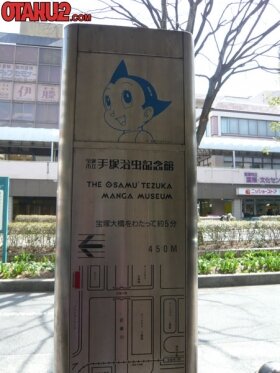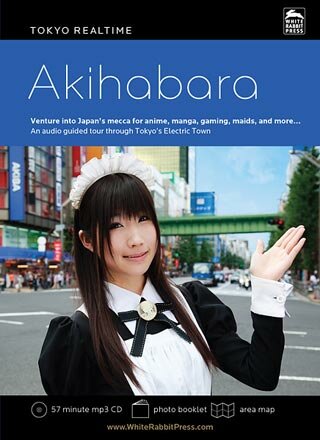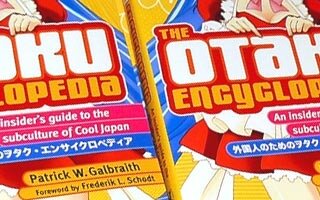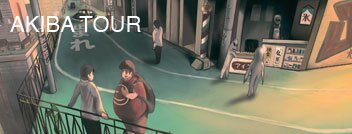 Filed under: Tezuka Osamu Manga Travel
Filed under: Tezuka Osamu Manga TravelTezuka Osamu Memorial Museum
23.09.2009 by Patrick W. Galbraith
Tezuka Osamu has been called the Walt Disney, Beatles and God of manga, and for good reason. In a career that spanned almost half a decade and 150,000 pages, Tezuka transformed manga with his cinematic style and mature themes. Because manga was printed on cheap paper, it was affordable and widely distributed, putting it in the hands of kids all over Japan after WWII. Tezuka was a guiding hand here, publishing "akahon" manga in red covers, including the hit "Shin-Takarajima" in 1946, which sold 400,000 copies. Along the way he established numerous conventions and expressions that revolutionized manga. He also put out the first TV anime in the 25-minute format, "Testuwan Atomu" in 1963. To keep costs down, he used limited motion frames and set up the Production Committee System of corporate sponsors. Those who want to know more about the man might consider a trip to the Tezuka Osamu Memorial Museum.
The facility is located in Takarazuka, a town in the hills of Hyogo Prefecture where Tezuka spent much of his youth. The city's name may sound familiar to some because of the Takarazuka Revue, an all-female theater troupe that made it famous. The gender bending of these shows and distinct makeup are said to have inspired Tezuka in making "Ribbon no Kishi," the first example of shojo (for girls) manga. The emphasis on the eyes in Takarazuka wasn't augmented by the influence of Max Fleischer and Walt Disney, especially "Bambi," which Tezuka claimed to have seen 100 times and later licensed to adapt as a manga. If walking to the museum in Takarazuka, one passes right by the grand theater. One can also see examples of the many insects in this rural location that captivated young Tezuka. His former animation studio, Mushi Productions, means Insect Productions.
The exhibition begins even before entering the impressive modern structure that houses Tezuka Osamu Memorial Museum. The sidewalk leading to the entrance features the signatures and imprints of various famous characters from Tezuka's works, who would often become stars and appear in his other works. There is also a grand statue of title character of "Phoenix," a massive epic often called Tezuka's lifework. The fun atmosphere continues inside, where the floors, walls and even ceilings are decorated with his characters. All the displays are cocooned in capsules that resemble the retro image of future technology seen in works such as "Tetsuwan Atomu" and "Metropolis." Each one is like a time capsule, housing examples of what inspired Tezuka, his work and toys and artifacts based on them. A television screen shows a collection of interviews with people who explain why Tezuka is important and what his work meant to them. There is also a small theater that plays a short biographical film, which is quite good. Unfortunately, everything is in Japanese.
In these opening minutes or hours in the museum, one comes away knowing Tezuka was an avid bug collector as a child, served in a munitions factory at the end of WWII and qualified as a doctor, but little is said beyond this documentation of his extraordinary life. It is clear he loved nature and was a humanist against war and hopeful for the future, but not his creative contribution to manga and anime. This is taken as a given for the elderly Japanese expected to visit, but it would be nice to note them for young Japanese and non-Japanese visitors. As is it kind of comes off as self-serving nostalgia.
The second floor to the museum does a slightly better job. There many, many examples of Tezuka's original work, and explanations (again, Japanese only) of what he did and why it is important. Things like the way he captured motion in car chases, or used multiple frames to show a subject from various angles and slow down a moment, demonstrate well Tezuka's cinematic style. There are some examples of his less popular works, such as "Cleopatra: Queen of Sex," "Marvelous Melmo" and "MW," and more mature works such as "Black Jack," "Buddha," "Tell Adolf" and "Neo Faust," which was only partially finished when Tezuka died in 1989. For those not so interested in a close examination of these drawings, there are plenty of dioramas of Tezuka characters, souvenirs and a diner, which provides Tezuka manga for free reading. Take the elevator down to the basement and check out an entire room that looks like Dr. Tenma's laboratory (really nothing else of note down there, though).
This probably is only recommended for hardcore manga fans who can read Japanese and want to know more about one of manga's central figures. While Takarazuka is a beautiful resort town, this museum is not enough of a draw to go all the way out there. The fact that very little is explained even in Japanese makes Tezuka and his creative contributions hard to penetrate for the casual visitor. On the other hand, the admission fee is only 500 yen, a cheap diversion for those in the area. The Tezuka Osamu Memorial Museum is open from 9:30 to 17:00, but the days it is open are irregular. Be sure to check the schedule of
opened days before making the trip to avoid disappointment.
 Tezuka Manga Museum
Tezuka Manga Museum















































Comment on this article

04.04.2010 · Blog
The reach of moe is long...
OK, so anime of late tends to put in cute girls to attract viewers and sell merchandise. Some people criticize and dismiss it for this...
22.03.2010 · Blog
Nippombashi Street Festa 2010
I shot over to Osaka for the Nippombashi Street Festa 2010. It was the sixth annual event, and by all accounts was a little more organized...
07.02.2010 · Features
Temple University Japan offers program in popular culture
Roland Kelts teaching anime, Patrick W. Galbraith manga
15.01.2010 · Blog
Tsutaya is renting manga
This really is going to be a happy new year! Tsutaya, Japan's largest chain of rental video stores, is now carrying manga. Lots of it. They...
28.09.2009 · Blog
Nippombashi pictures
Just some pics of the guys from Macross World and local Japanese otaku that showed me around Nippombashi last week. Thanks again Howard,...
11.08.2009 · Reviews
Mospeada Complete Art Works Book Review
The Mospeada Complete Art Works book just hit bookstores in Japan this past Saturday August 8th. It’s the eighth volume in the...
30.06.2009 · Blog
Kashihonya still exist!
And here I thought these were all gone! This one is in Kunitachi way out on the Chuo Line. Still in business, even with all the online...


























